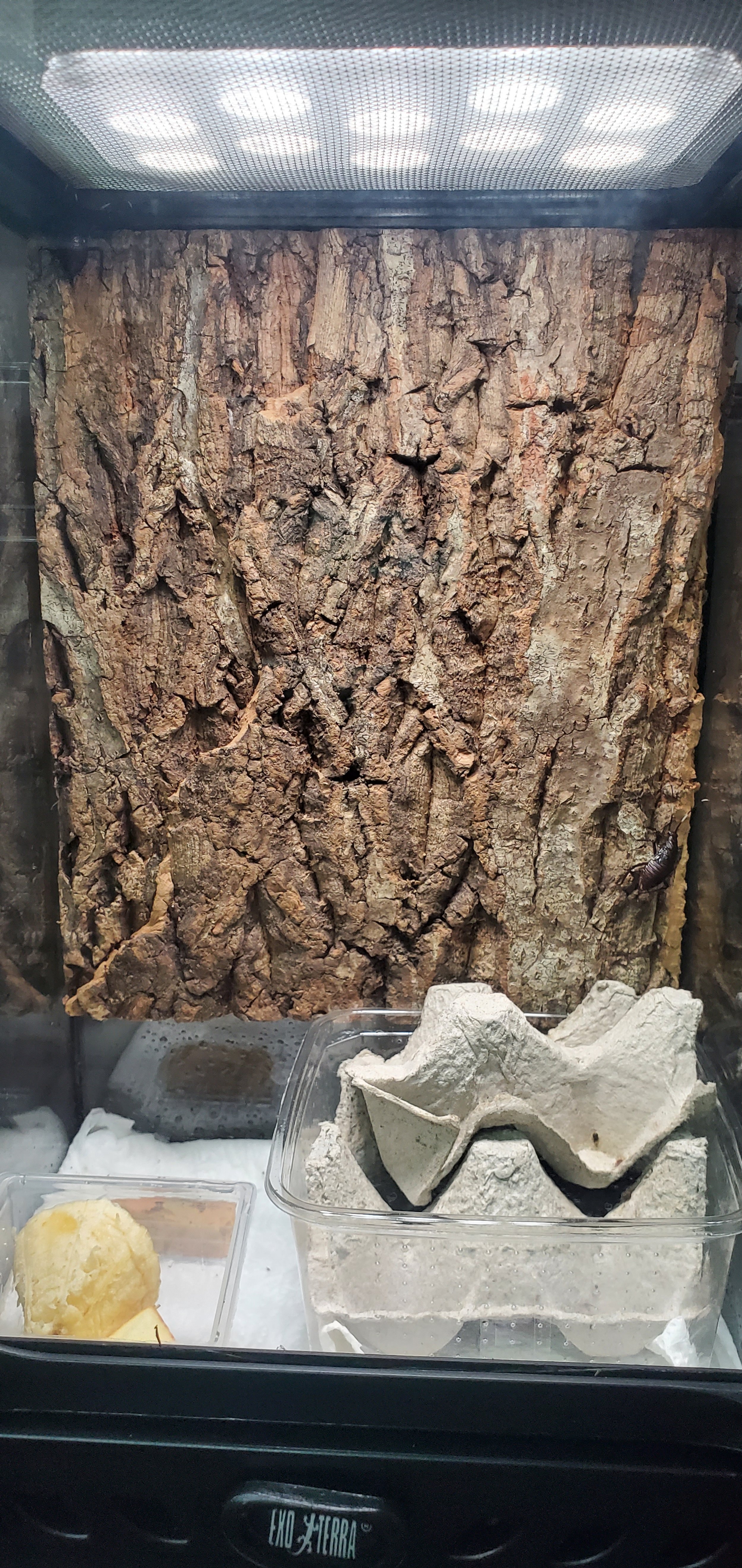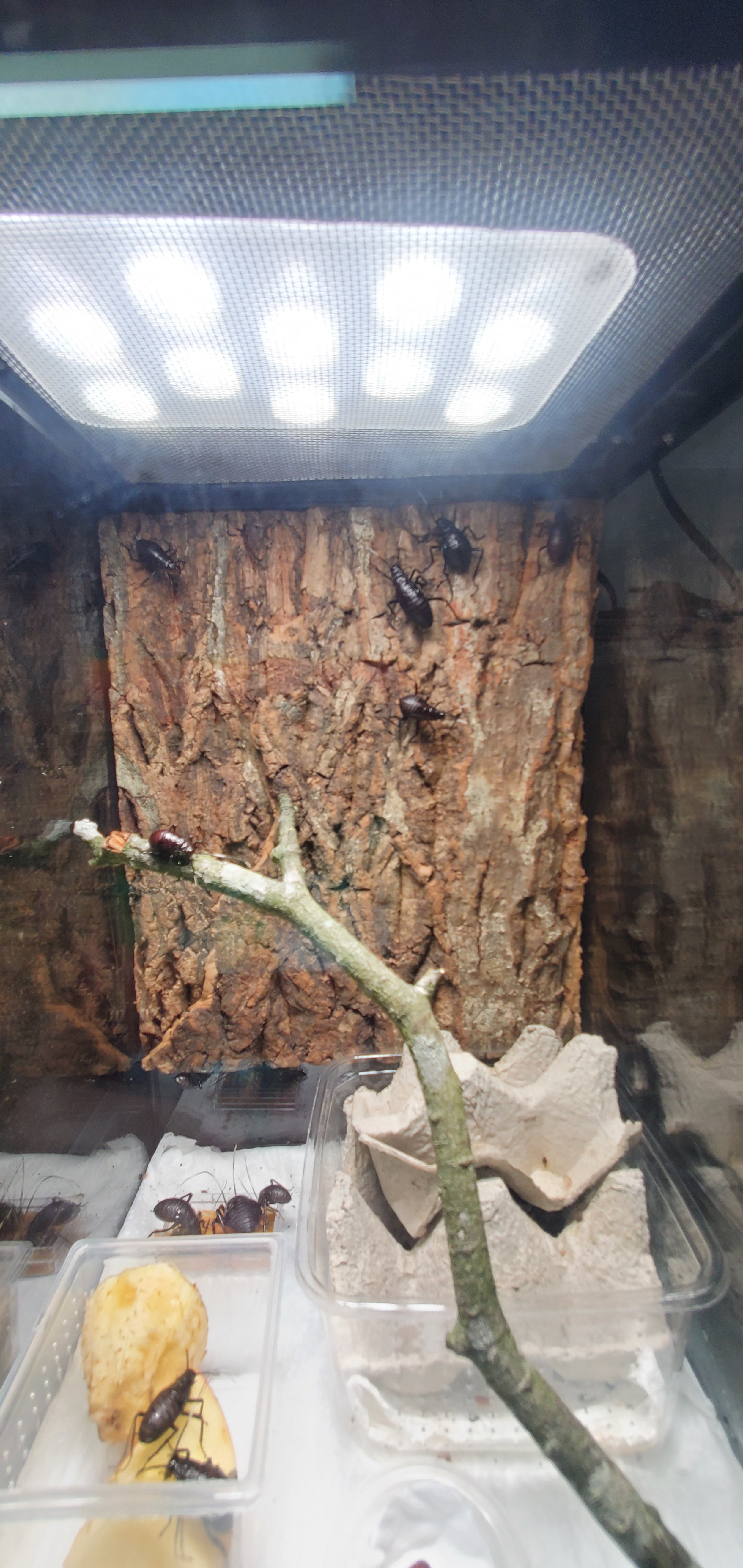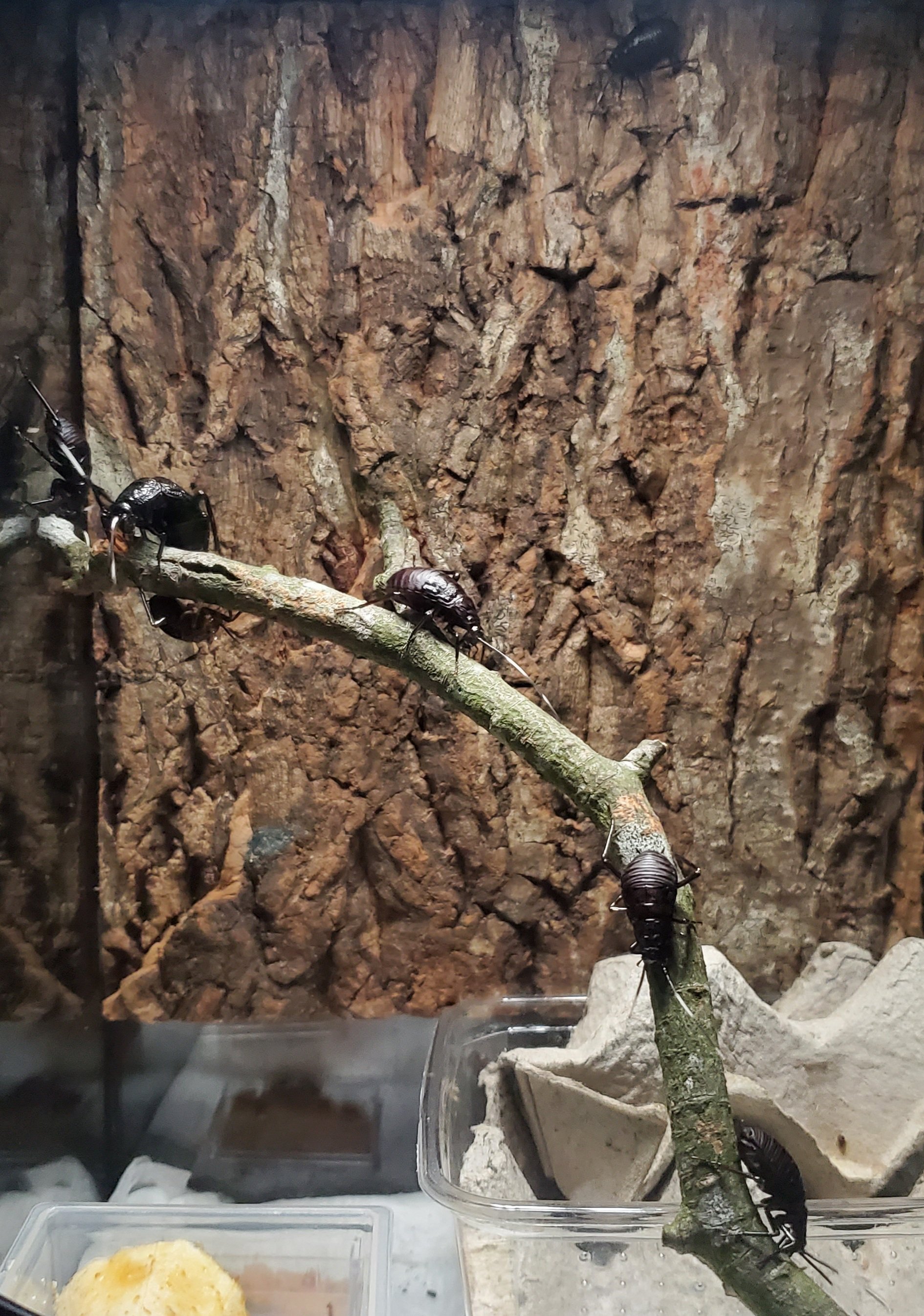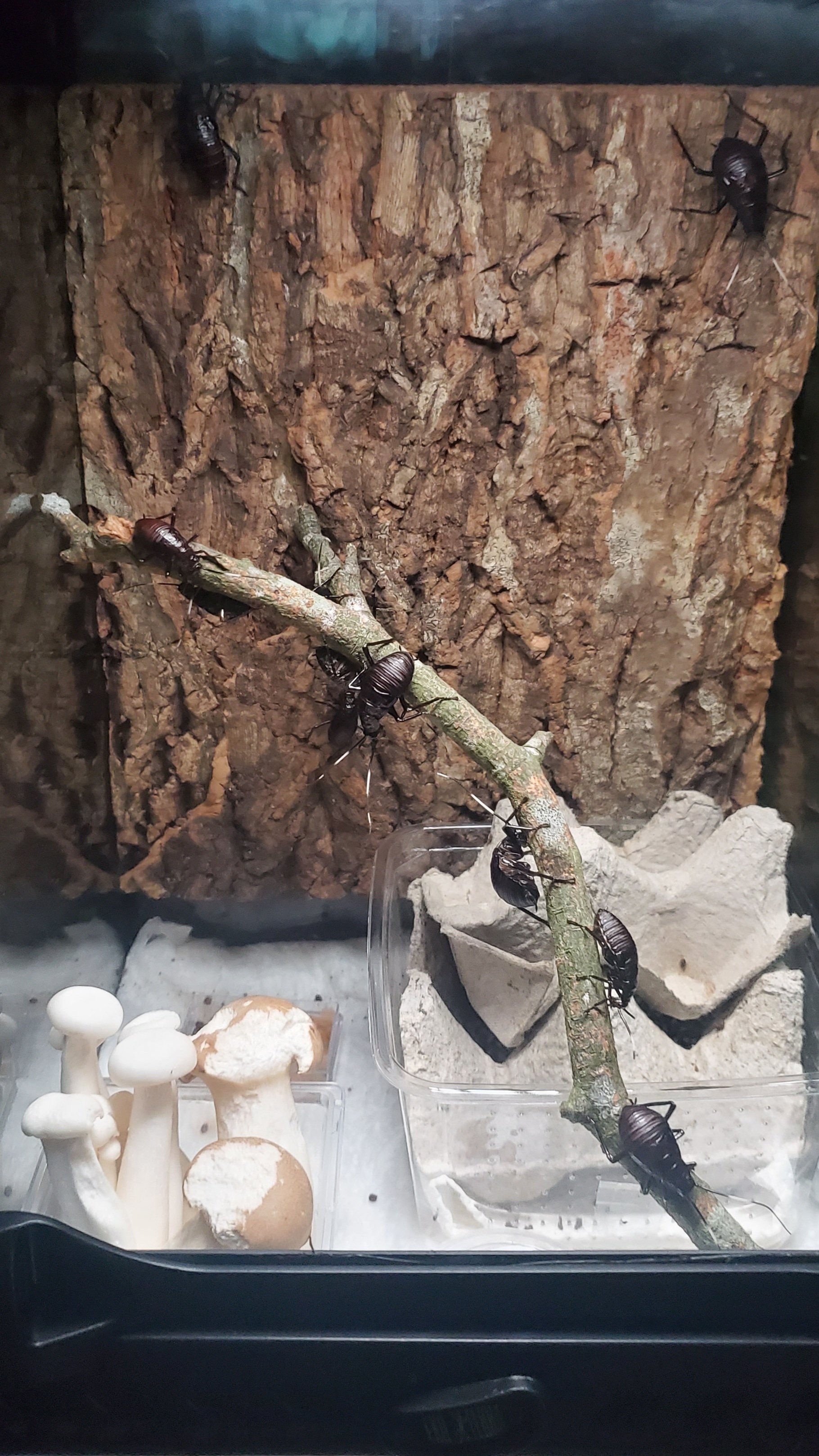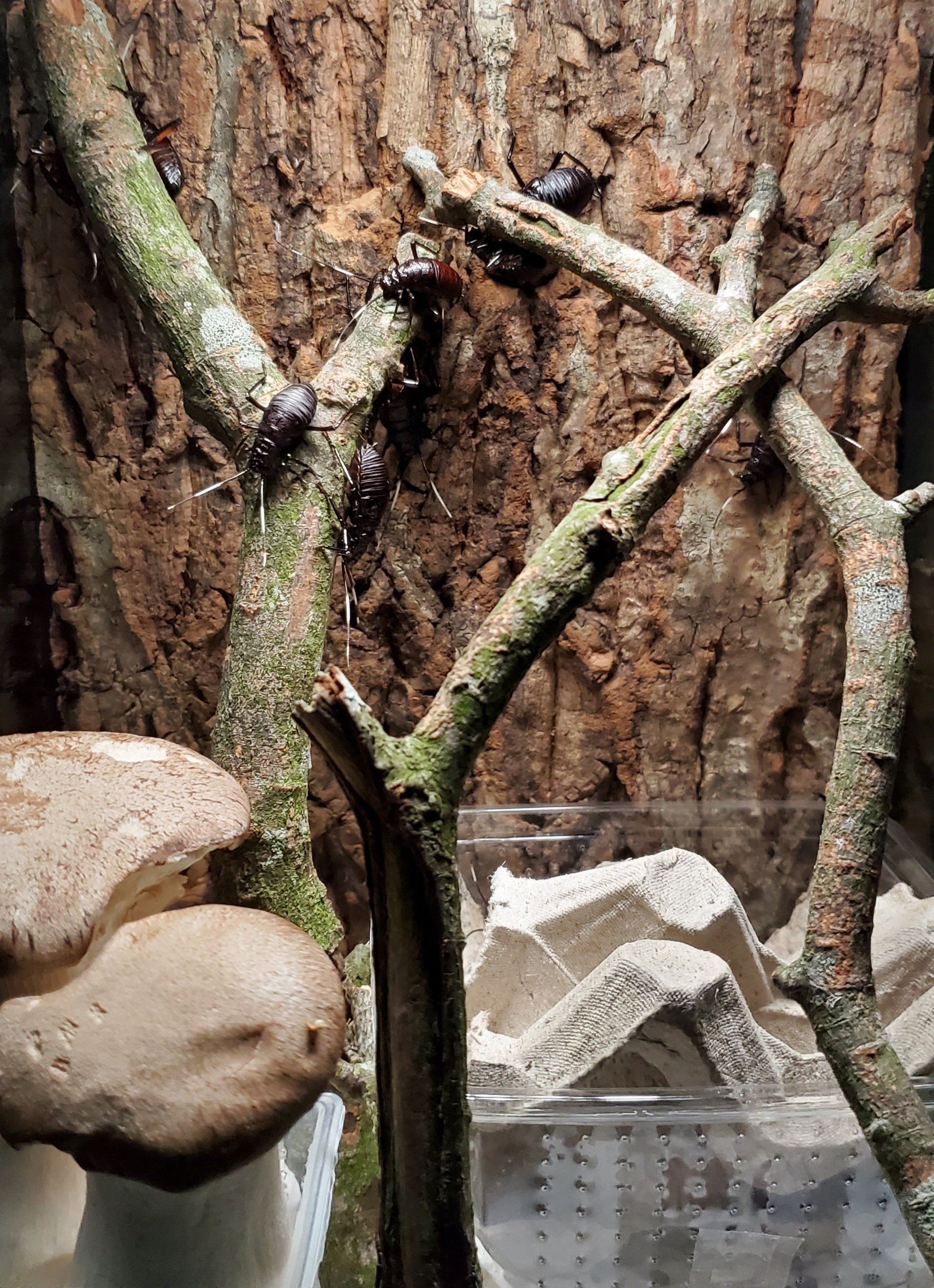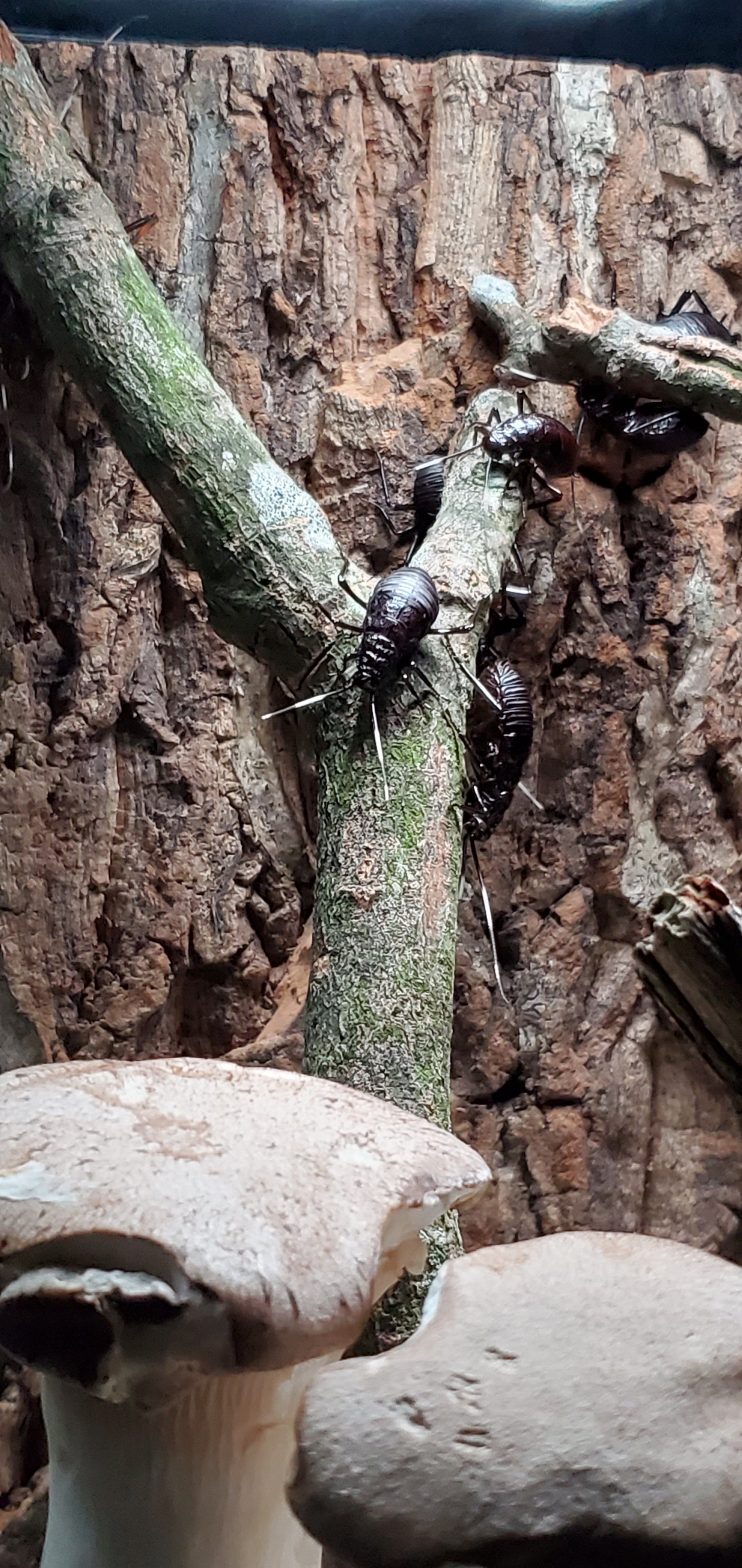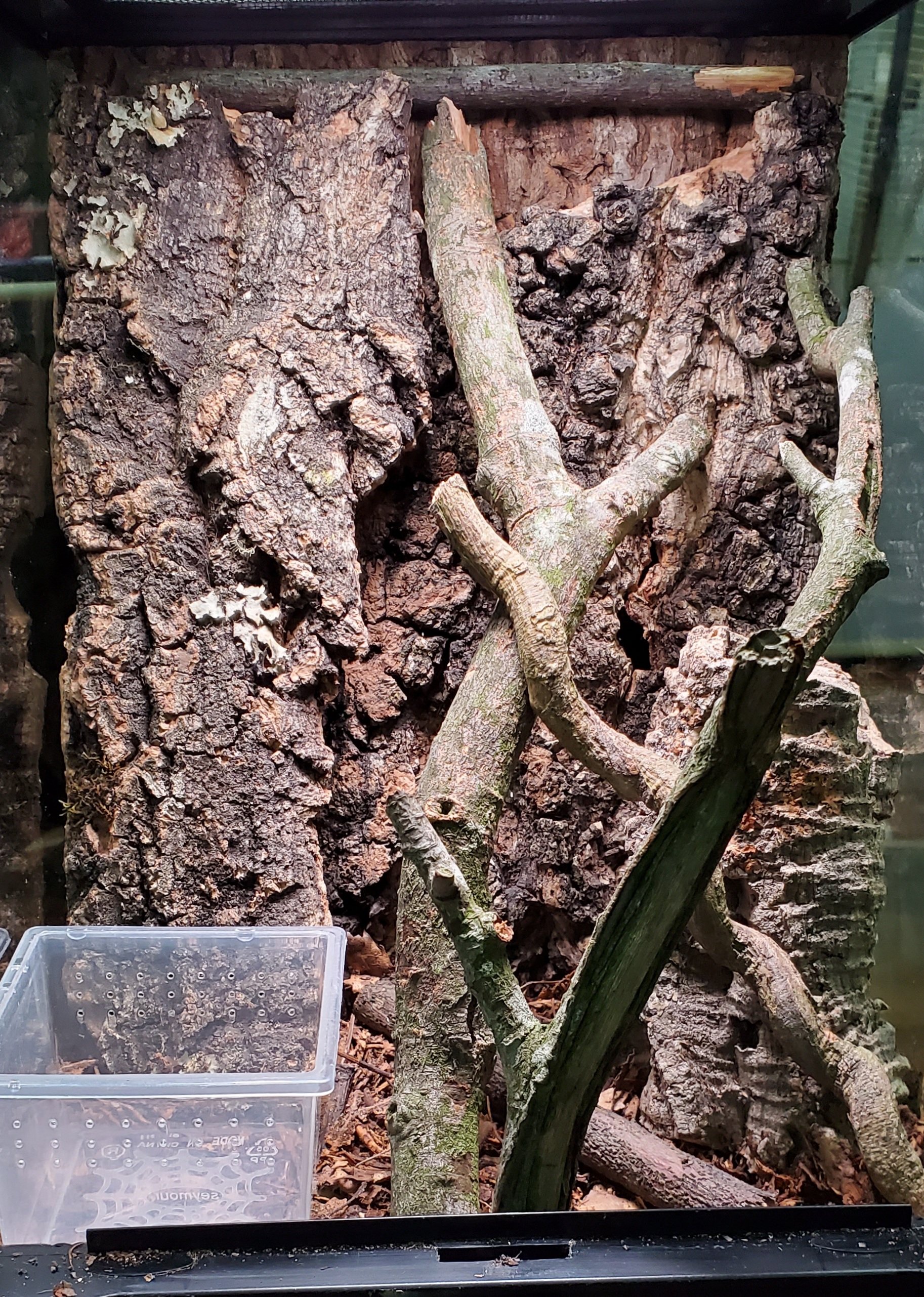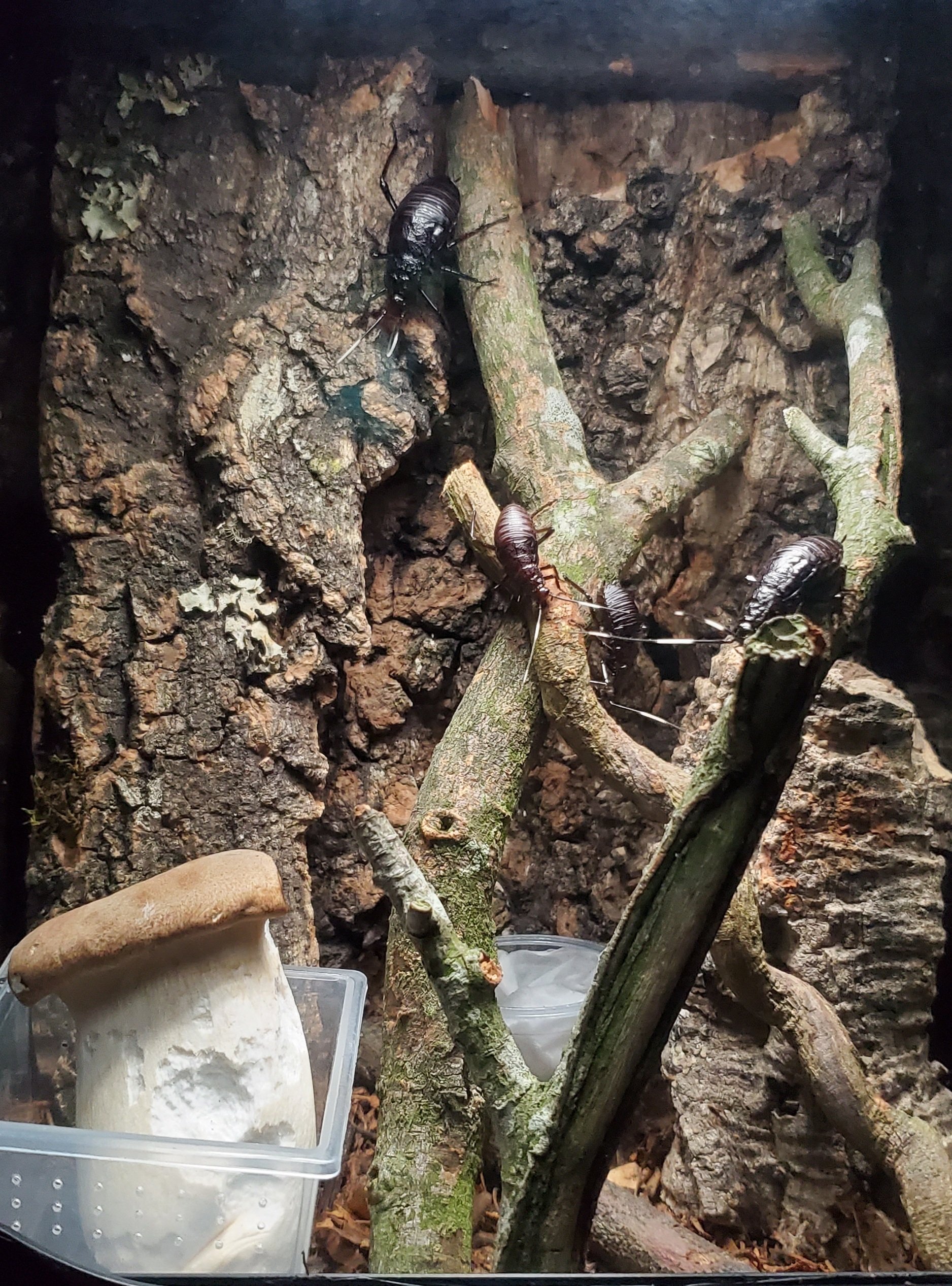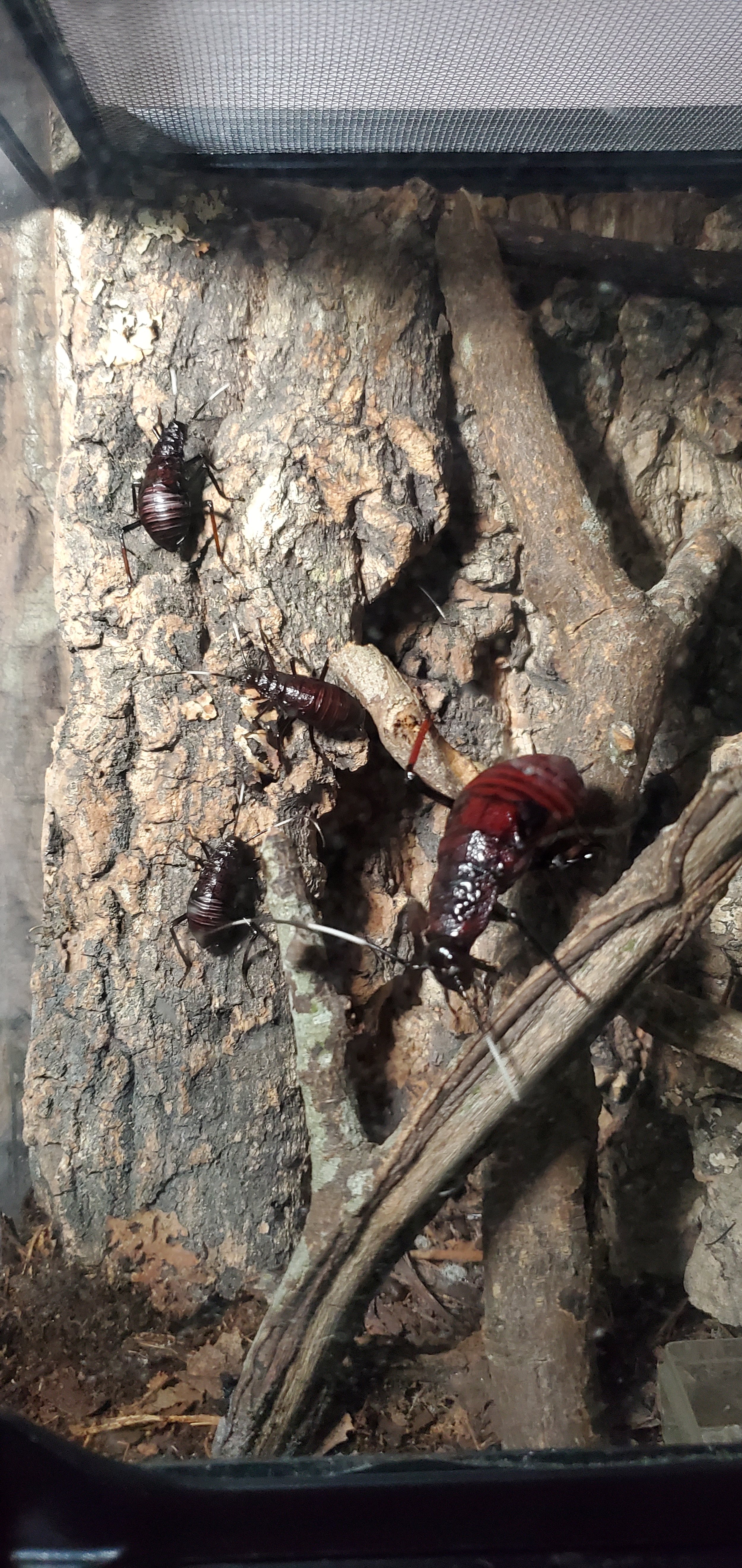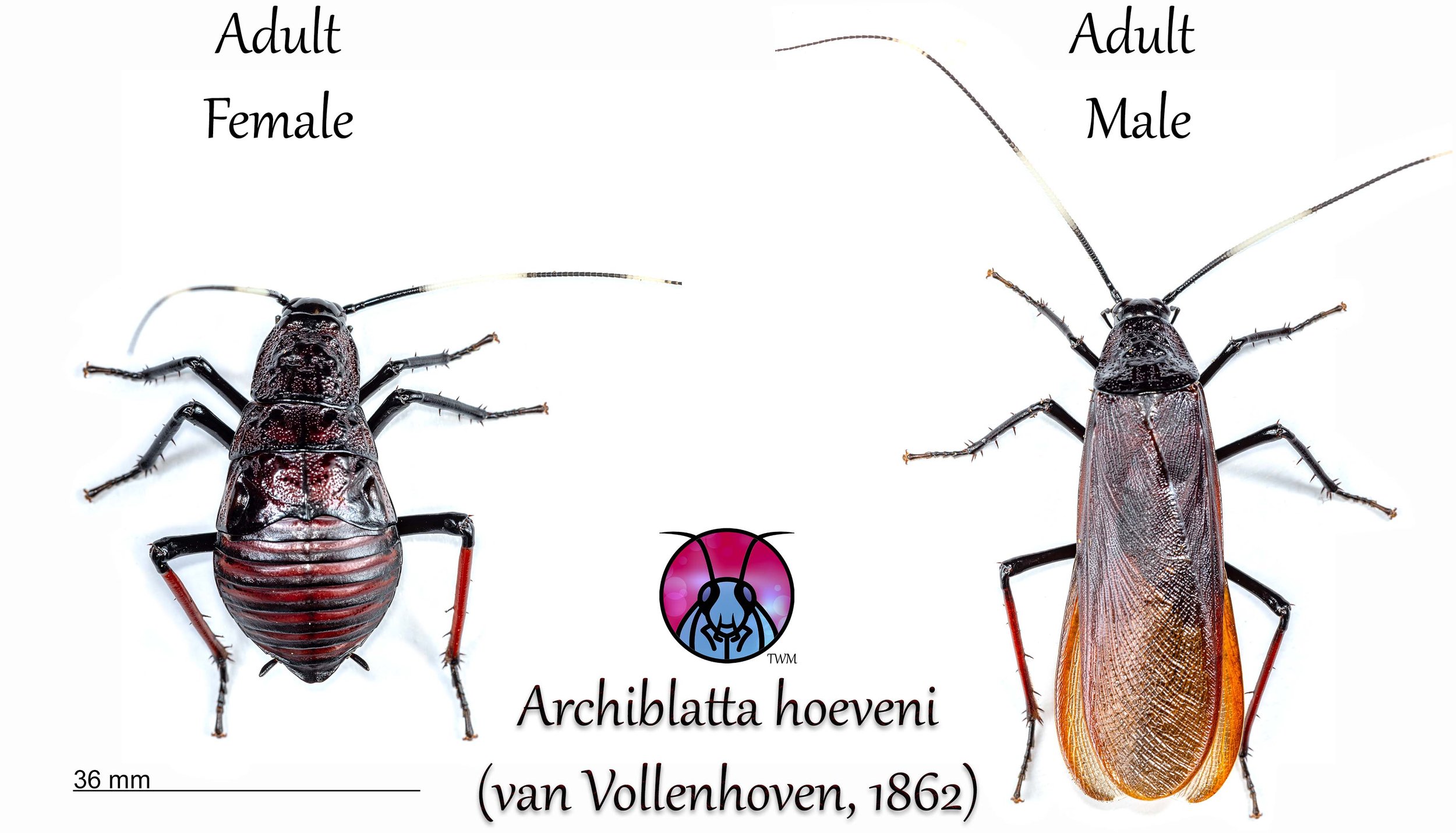Archiblatta hoeveni, The Hoven’s Roach
Archiblatta hoeveni nymph
Welcome to the entry log for my colony of Archiblatta hoeveni roaches.
I received 15 mixed nymphs and one un-hatched ootheca on the 11th October 2021.
Archiblatta hoeveni mixed nymphs colony
Archiblatta hoeveni mixed nymphs colony
All individuals arrived safely and well, and I cannot tell you how pleased I was to finally have such an amazing species in my collection.
Archiblatta hoeveni nymph
I immediately prepared their enclosure and a first meal, which they immediately took :)
Archiblatta hoeveni mixed nymphs feeding on apples, carrots and dry turtle food pellets
Over the course of the next days and weeks, I kept upgrading their enclosure little by little.
I also adjusted their food sources according to their preferences.
After I started to add some naturalistic elements, like cork background and branches, dry leaves, etc, I noticed they would come out late at night and would munch on the ones that were covered with lickens and green algae (?) and so I introduced them to mushrooms, in particular I noticed they absolutely love the big King Oyster mushrooms, and lucky me, because those are the most available and also the cheapest.
I also did a rotation between mushrooms, apples, bananas and turtle/fish food.
Archiblatta hoeveni mixed nymphs feeding on king oyster mushroom
All the colony was housed together inside an exoterra nano small enclosure 20x20x30cm. Up to this day, I haven’t lost a single nymph and all seem to be doing great. But one important thing to notice, is that, although upon reception of the nymphs, the size difference between them was not that noticeable, few months later, it became apparent that some were growing very fast while others very slow.
I am unsure if this is because of a certain feeding order, or because the enclosure is too small for all of them.
Archiblatta hoeveni nymph
And this brings up to today.
Only 3 months later, I have 4 breeding pairs, with 4 mature males, 1 mature female, and 3 pre-adult females. All separated into their own pairing enclosures.
Archiblatta hoeveni pre-adult female
Archiblatta hoeveni adult male and adult female
The remaining 7 nymphs are inside the original exoterra enclosure, and I haven’t been able to sex them. But I have to say, that I feel very lucky, of all the possible combinations, to have had the luck of having 4 pairs, developing almost in sync, couldn’t have asked for anything better.
Now I am hoping to start to have some oothecas and some breeding soon.
Which reminds me of the ootheca I received them the original seller, which unfortunately didn’t hatch. I am still keeping it, just in case a miracle happens :)
Well this is all for this post.
I will try to correct the photo compositions as soon as possible and continue to give you updates on their developments.
I would like to wrap up this post by making reference to Cockroach Studies Issue 2 of August 2007 , which has a whole article named “Notes on rearing Archiblatta hoeveni” by Ian Abercrombie, which I would recommend you to read.
Thank you to Dr. George W. Beccaloni for providing this awesome issue of the Journal of the Blattodea Culture Group.
See you all on the next log, thank you for taking the time to read.
Cheers!





